Rules for gluing vinyl wallpaper
In order for the wall to remain beautiful after pasting, and the vinyl coating to hold tightly, you must adhere to simple rules:
- An important nuance of vinyl wallpaper with rapport is that they should be glued joint to joint, drawing up a pattern. You need to glue directly if marking on the packaging contains arrows located opposite each other. Otherwise, pasting with an offset is assumed. The distance in centimeters to move the contacting strips is indicated on the package.
- Before gluing, you need to choose the right glue. It can be a special composition for vinyl wallpaper, if the base is non-woven. For a paper base, a regular adhesive mass is sufficient. The main thing is that it has a sufficiently viscous consistency.
- Canvases are glued to the wall from top to bottom. First, the section is pressed along the longitudinal axis. Then you need to drive out the excess glue and air. To do this, use a roller or dry clean rags.
- The edges are oiled especially carefully. A well-executed counter-docking assumes that the joints are rolled with a special narrow rubber roller or pressed with rags. Removing the glue means removing stains from the walls.
In addition to the general rules, the type of base of vinyl wallpaper affects how to glue. It can be paper or non-woven. And if in the first case the canvas is lighter, then the vinyl wallpaper on the non-woven liner, which has a foamed embossed coating, is heavy, thick, and this must be taken into account.
Features depending on the basis
| Paper backed vinyl wallpaper | Non-woven vinyl wallpaper |
|---|---|
| The glue can be applied to the wall or prepared canvas. | Durability is due to the use of non-woven material that forms the base. |
| The assortment includes series for painting, as well as models with colored spraying. | The adhesive is applied only to the wall, and the wallpaper remains dry. |
| It is possible to use an adhesive mass for simple paper wallpapers. | The non-woven base additionally reinforces the wall. The foamed embossing is ready for painting. |
| Adequate adhesion is provided by a special adhesive. |
What is the best way to glue vinyl wallpaper?
The choice depends on the type of material that forms the base of the vinyl sheets. If it is paper, you can use PVA glue, but it is difficult to achieve quality, since the strips will slowly slide under their own weight. The use of paste is also not recommended, since the flour and starch substance is a suitable medium for the life of microorganisms. So how to glue the wallpaper so that it does not move away from the wall?
Non-woven base
Specialized mixtures are used, which include modified starch.And to prevent mold from appearing, components are used that, in addition to the antiseptic effect, increase the viscosity and stickiness.
Paper-based
The use of adhesives for paper wallpaper is allowed. But this is when there are no foamed embossed elements on the surface of the canvas that weight the wallpaper. If painting is intended, this method will not work. But when it comes to a surface with a colored pattern, paper wallpaper glue can be used.
IMPORTANT! The glue consumption is usually indicated on the glue package. But it depends on the type of surface and the base of the wallpaper. The average consumption is 180 g of dry matter for 4-5 rolls.
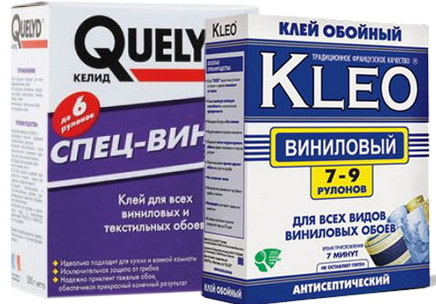
Instruments
To perform all the necessary actions, you need to have at hand:
- utensils for making glue;
- rollers for squeezing out excess glue and air;
- plastic wrap to cover the floor;
- dry rags to ensure cleanliness;
- narrow rollers for rolling the opposite joint;
- wallpaper knife, pencil or ballpoint pen;
- measuring ruler and guide for cutting strips;
- wide spatula, which is useful for adjusting the canvas;
- special corner rubber roller for rolling inside corners.
All this must be prepared before gluing vinyl wallpaper, regardless of the type of base.
Preparation
Before completing the final interior decoration, the following must be done:
- Decide on the selection of vinyl wallpaper and glue.
- Prepare surfaces.
- Remove all the consequences of the repair.
- Cover the floor with polyethylene.
- Disconnect electricity.
- Remove the covers for sockets and switches.
- Buy the necessary tool.
In addition, before gluing the wallpaper, you need to familiarize yourself with the recommendations for diluting the glue and preparing the wall surfaces.
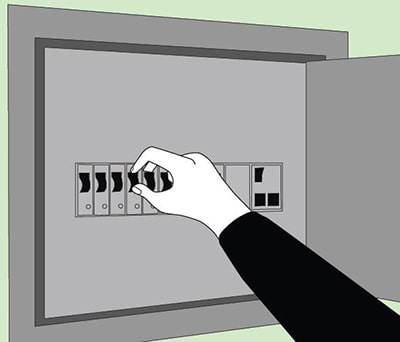
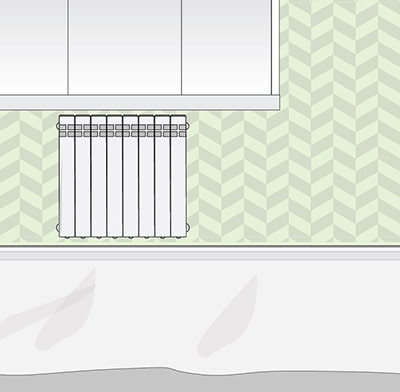
How to properly dilute the glue?
Dry granules are poured into water. The solution is constantly mixed by hand or using a special attachment for a drill or screwdriver. Cooking recommendations are on the packaging. The main thing is that you do not need to knead the entire pack. Enough for three to four lanes.
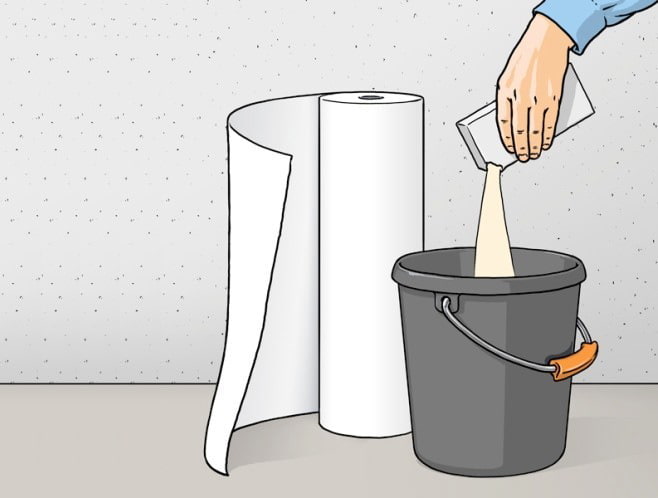
Surface preparation
You cannot glue vinyl wallpaper on paint, old wallpaper, styrofoam. The linen will not adhere to OSB, tiles and laminated panels. Concrete walls are suitable, but if they are uneven, the defects are repaired with putty. On gypsum plasterboard structures, strips are glued without preliminary preparation, if the surface is clean. Before gluing, you need to remove the remnants:
- old wallpaper;
- lime;
- paint or whitewash;
- oil stains and dirt;
- all unnecessary.
You need to clean it as carefully as possible, up to removing the plaster and applying a new layer. The surface must be primed.
Wall gluing technology
When cutting strips, you need to take into account the presence of a pattern. If it is necessary to glue with a shift, the stock is taken into account, which is laid in order to fit the pattern. The strips are glued joint to joint without overlap. If the base is non-woven, you do not need to coat the stripes. The sequence of actions is reduced to four stages.
-
Stage 1: scheme and wall markings.
You need to glue from the window. For this, the width of the strip is measured and a vertical line is drawn along the level or plumb line. The entire wall is marked, which gives an understanding of how many strips need to be prepared.
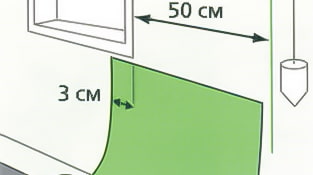
-
Stage 2: preparing the wallpaper.
The stripes are spread on the floor. The drawing is adjusted. The length is 3-5 cm more than the height of the ceilings or the width of the room (if the ceiling is pasted over). Such a number of strips are prepared so that the finished glue is all consumed.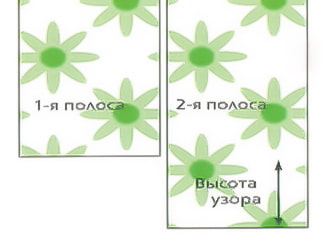
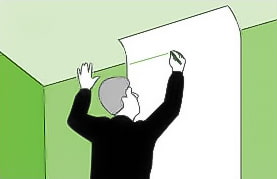
-
Stage 3: gluing.
The top of the strip is applied to the missed wall. A roller or cloth presses the central part along the longitudinal axis to the very bottom. In the same way, residual air and excess glue are expelled from the middle to the edges.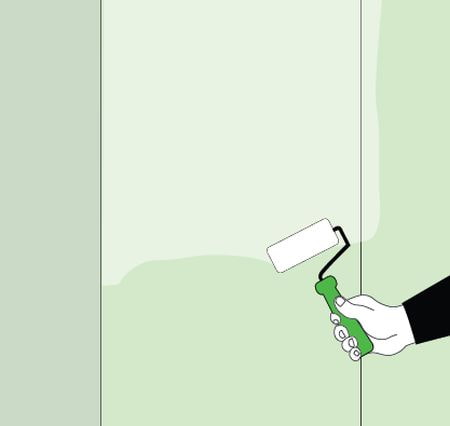

- The joints, the upper and lower ends are rolled with a narrow roller, the protruding glue is removed with a rag.

-
Stage 4: final.
The excess is cut off with a wallpaper knife along the attached wide metal spatula.
What about hard-to-reach places?
The technology of pasting external and internal corners is a specific process that involves the use of special means. When pasting the walls around the window (door) openings and behind the radiators, you need to measure and cut out the necessary pieces in advance.
In the photo, a diagram of gluing wallpaper around sockets and switches:

In the photo, the scheme for gluing wallpaper behind the radiator:
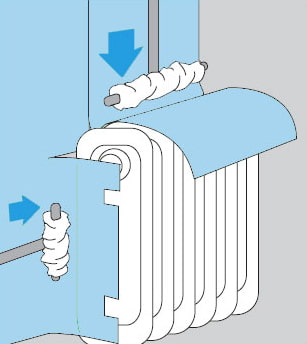
Step-by-step instructions for gluing the ceiling
Strips of vinyl wallpaper are glued from the window to the entrance. Direction - across the length of the room. The technology is similar, but has a number of features.
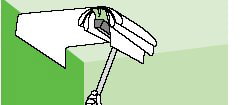

Video tutorial step by step
For clarity, it makes sense to watch a specially shot video, which describes in detail how to glue vinyl wallpaper on the wall and ceiling.
How long does vinyl wallpaper dry?
The room must remain closed during the day. Draft leads to overdrying. Forced heating is also undesirable, and the use of heaters is prohibited. The windows and doors can be opened in a day. But if it is cold outside the window and the room is not heated, you will have to wait 2-3 days.
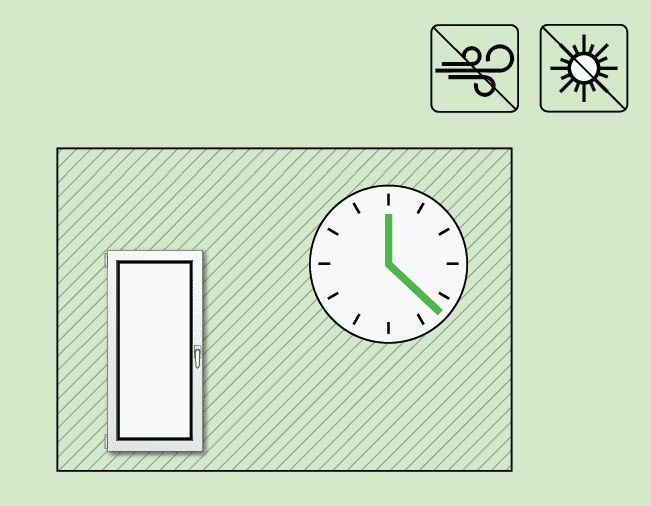
Having done everything as described above, everyone can glue the vinyl wallpaper with their own hands and save money.

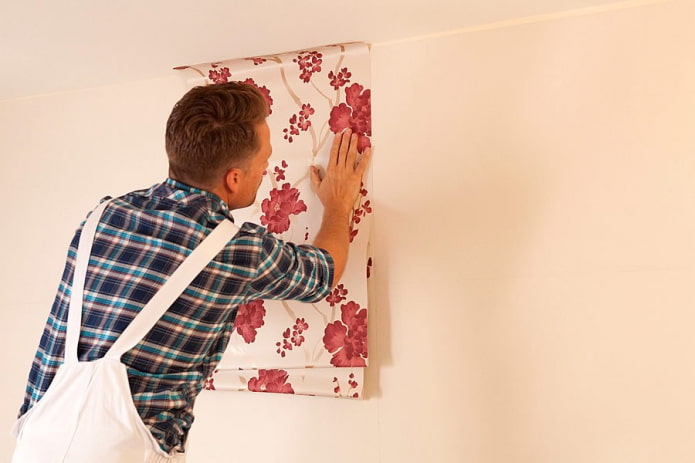
 10 practical tips for arranging a small kitchen in the country
10 practical tips for arranging a small kitchen in the country
 12 simple ideas for a small garden that will make it visually spacious
12 simple ideas for a small garden that will make it visually spacious
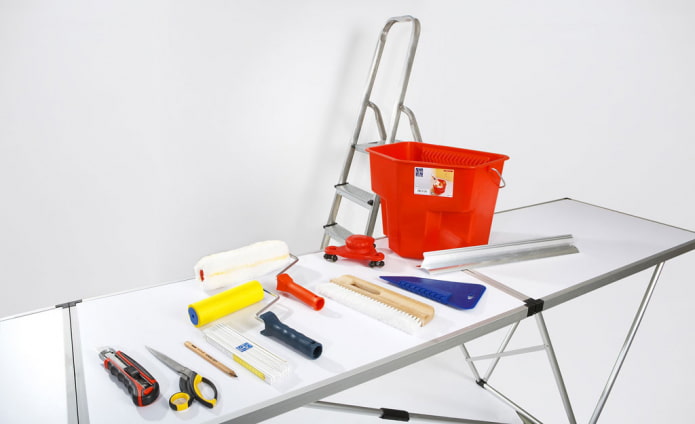
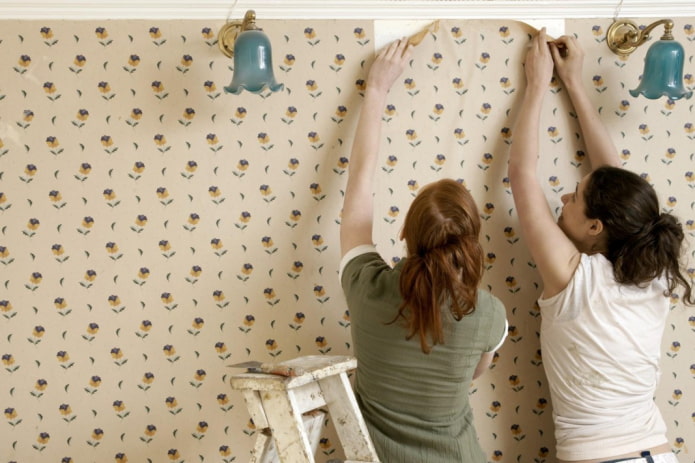
 What is better not to do it yourself during the repair?
What is better not to do it yourself during the repair? Bloated linoleum: how to fix it without disassembly
Bloated linoleum: how to fix it without disassembly The worst decisions in apartment renovation
The worst decisions in apartment renovation  Installation of ceiling tiles: choice of materials, preparation, order of work
Installation of ceiling tiles: choice of materials, preparation, order of work How to glue a ceiling plinth to a stretch ceiling?
How to glue a ceiling plinth to a stretch ceiling? Ceiling plinth for stretch ceiling: types, recommendations for selection
Ceiling plinth for stretch ceiling: types, recommendations for selection